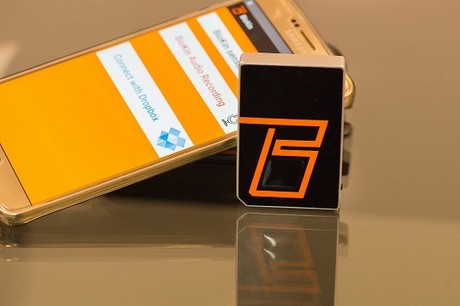Motion capture device for rehab patients

Deakin University researchers have designed a wireless motion capture device, about the size of a matchbox, that is changing the lives of a variety of Australians — from Parkinson’s disease sufferers to golfers.
While other motion capture systems track steps, sleep and heart rate, BioKin monitors the smallest movements of the human body. It easily attaches to clothing and can use a number of wireless 3D motion sensors to cover the full body. Specialist software captures data that can be easily accessed in real time via a phone app, with online accessibility via cloud storage.
“BioKin was created to help doctors and clinicians better monitor the progress of patients with balance disorders, recovering from strokes, living with Parkinson’s disease or regaining movement after surgery,” said Associate Professor Pubudu Pathirana, leader of the project.
“The small, light units provide incredibly accurate data — pinpointing movement to a greater accuracy — that give a really clear picture of how a patient is progressing with their rehab.
“The units send the data straight to the patient and their medical team in real time via a simple-to-use app.
“Patients can do their rehab at home, reducing the need to visit the doctor’s office or hospital. This lessens the strain on the medical system and saves time and money for patients, especially those living in regional or remote areas.”

BioKin has completed preliminary trials and is currently undergoing formal clinical trials for balance and movement disorders, as well as wrist and shoulder rehabilitation. It has also attracted interest beyond the medical sphere and into the sporting arena.
“Since BioKin hit the market, we’ve sold units to the Royal Melbourne Hospital and the Florey Institute of Neuroscience, and we have been in discussions with horse trainers who plan to strap the unit to a horse’s leg to assess its range of movements,” said Associate Professor Pathirana.
“And one of my own team members, an engineer and golf pro, has used BioKin to improve his green-side bunker shot, the toughest shot in golf. So we’re looking at the device as a golf training tool and we intend to release BioKin for this application as well.
“By attaching BioKin units to the head of his pitching wedge, his forearm and bicep, he’s been able to gather incredibly detailed and accurate data about his swing and make the necessary adjustments to see his handicap shrink even further.”

Associate Professor Pathirana said BioKin will soon head to international markets, with plans for export to the Middle East in the coming months. He added that the uses for the device are sure to expand further as software developers get a hold of it.
Handheld sensor enables rapid detection of multiple bacteria
Researchers have developed a handheld biosensor that can simultaneously detect multiple...
'Frozen smoke' sensors detect indoor pollutants
Researchers have developed a sensor made from 'frozen smoke' that uses artificial...
New sweat-resistant wearable robot sensor
Researchers have developed an electromyography (EMG) sensor technology that is unaffected by the...










